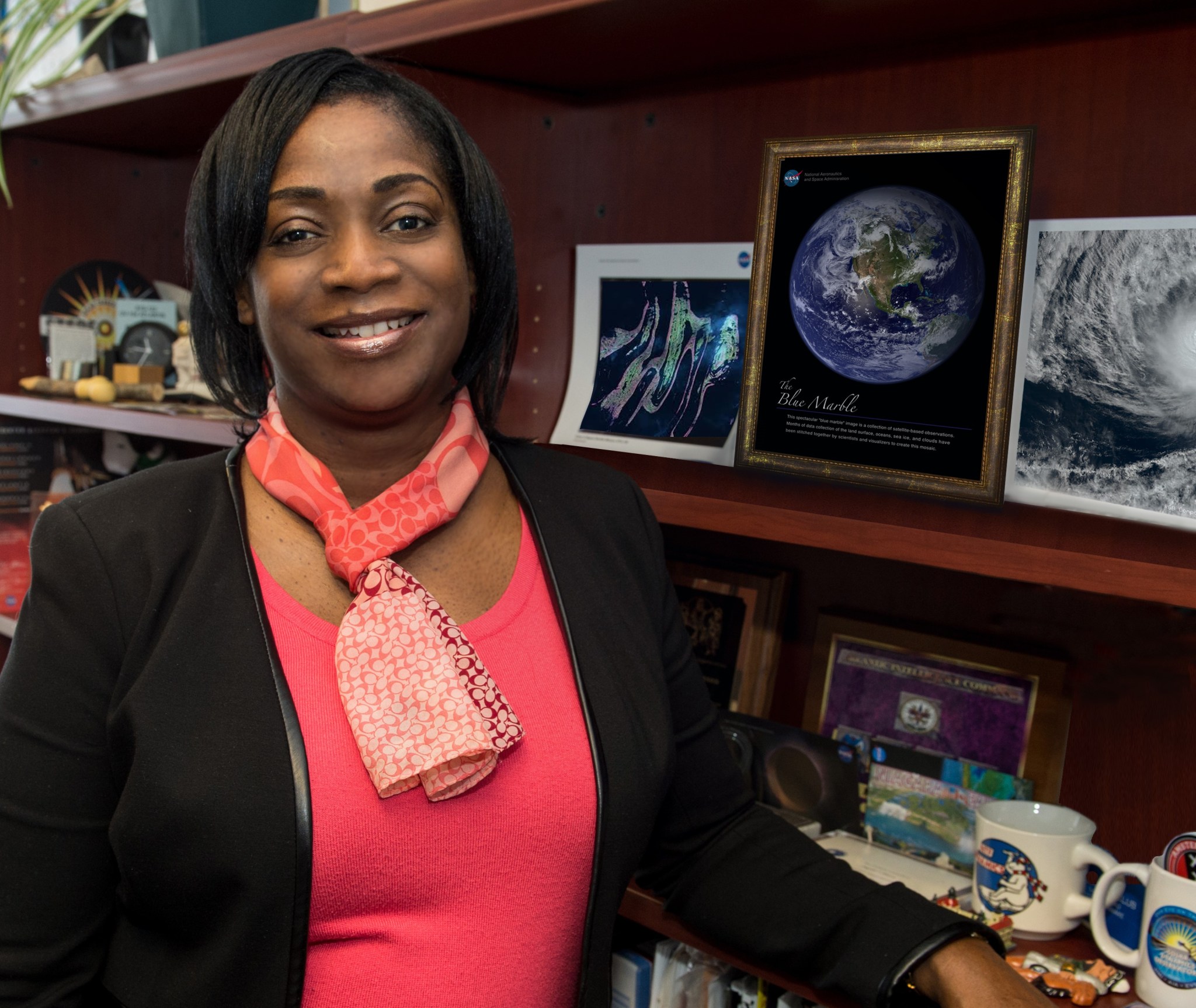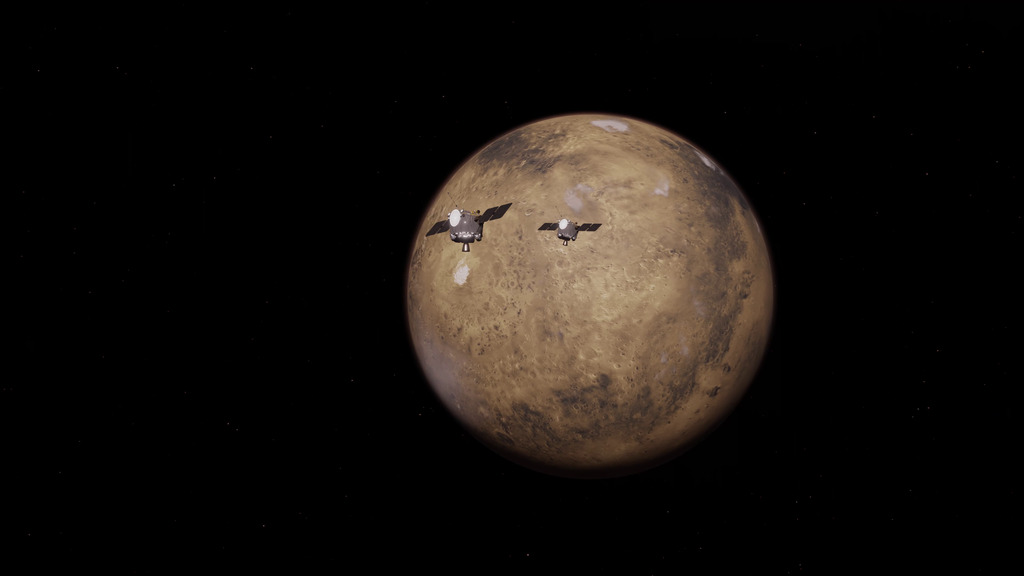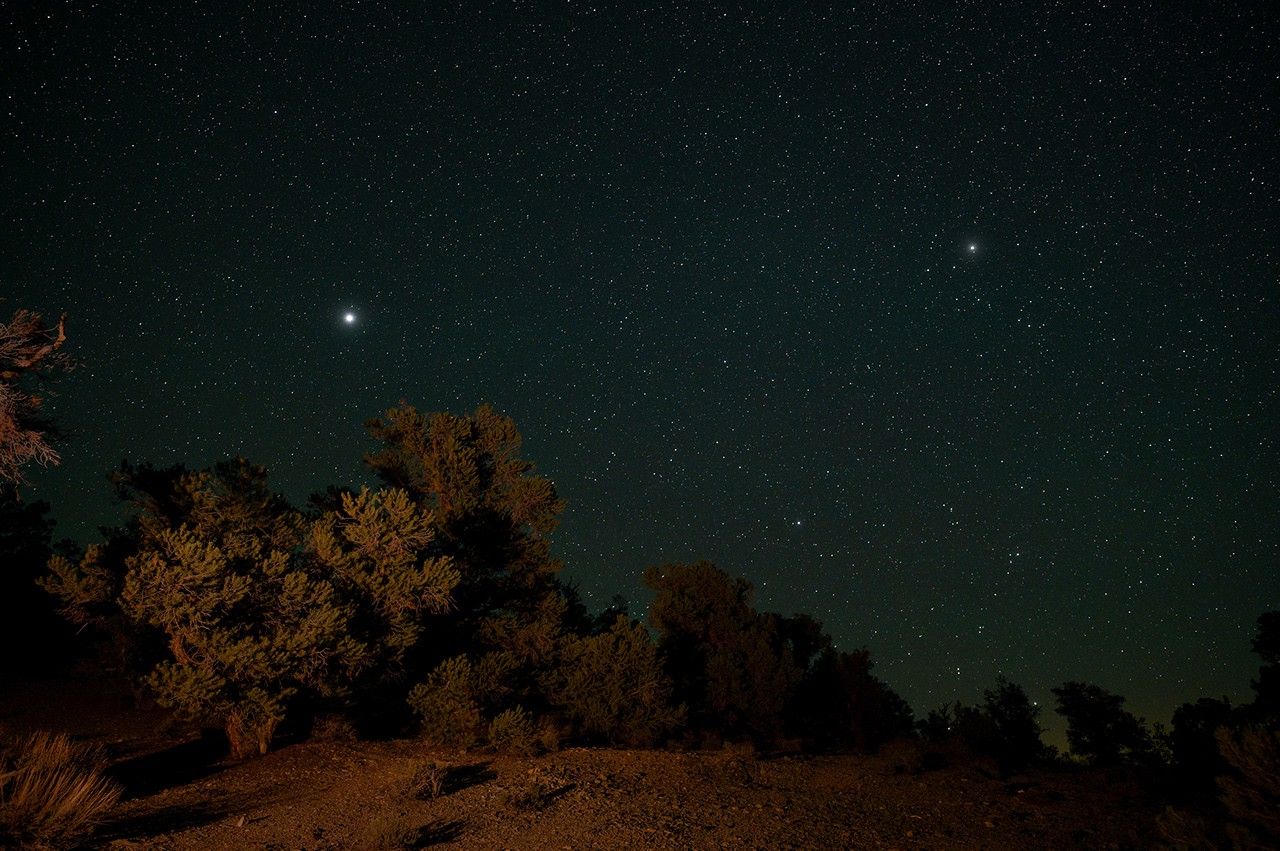Name: Angela Mason
Title: Mission Manager, Decadal Survey Tier II Formal
Job Classification: Technical Manager
Organization: Earth Science Projects Division (Code 420), Earth Systematic Missions Program
If you ever wondered how a NASA mission gets started, ask Mission Manager Angela Mason.
What do you do and what is most interesting about your role at Goddard? How do you help support Goddard’s mission?
I am a Mission Manager for the Earth Systematics Missions Program. I have three of the Decadal Survey Tier II missions: Surface Water and Ocean Topography (SWOT), Aerosol – Cloud – Ecosystems (ACE), and Geostationary Coastal and Air Pollution Events (Geo-CAPE). One of my missions has progressed to formulation, the other two are in pre-formulation (study and planning stages). Basically, I help get the missions going by providing technical input and programmatic oversight. I perform technical evaluations for them to get the proper funding and make sure the tasks they set out to do are appropriate. I collaborate with Program Executives, Program Scientists, project teams and science teams, both national and international from four NASA Centers as well as NASA Headquarters, industry and other agencies.
What do you do in a typical day?
My typical day varies because I have three missions and other responsibilities. One of my duties is to help prepare missions for key decision points and various project reviews, such as concept and design reviews. I might be working closely with the Project Manager to review required documents, program plans, and key products that have to be reviewed, assessed and signed off. I give them my input and help finalize certain deadlines. Sometimes I am participating in various technical reviews, science meetings or teleconferences.
What did you want to be when you were younger?
I wanted to be a computer scientist. I knew that computers were the way of the future. I also liked math because I won a contest in the seventh grade dealing with the metric system. Winning that contest excited me. When I went to high school at Howard Career Center in Wilmington, Delaware (currently named Howard High School of Technology), I majored in data processing. I spent half the day learning data processing and the other half studying my core college prep courses like English, math, etc.
How did you become an engineer?
I stumbled into engineering. When I was an undergraduate at Hampton University, Dr. Woodrow Whitlow, who is now a retired Associate Administrator for NASA HQ, invited me to a student symposium sponsored by the National Technical Association (NTA), a local professional chapter in the Hampton Roads area. I went and became really excited because I met other students majoring in math, engineering, and science from numerous universities. We didn’t have a NTA chapter at Hampton University so I started a student chapter and became the student president. Since a lot of the engineers were close by at NASA Langley Research Center in Hampton, Virginia, I was able to invite many of them to talk about what they did at NASA. Most of the speakers were engineers. I landed a Computer Engineer position at Langley because of my technical background in math, physics and computer science. Later I wanted to get involved in test engineering and become an aerospace engineer.
Is the chapter of the National Technical Association still in the Hampton Roads area?
Yes, there is an active local chapter. In fact, they still have a math contest that I started too. I originated and chaired the contest in 1988 so it’s probably been going on for over 26 years. The math contest was for middle and high school students. We gave out awards for first, second and third place and then an overall top school award. During the contest, we had different professionals from NASA and other technical companies give tours, demos and presentations so that students could get exposed to what we did. Overall, the contest was a development experience to expose the students to the STEM field.
What was your job at NASA Langley?
I was one of the lead test engineers in the Aircraft Landing Dynamics Facility in the Structural Dynamics Branch. We basically did research associated with landing gear, improving tire wear, tire friction and runways for various test programs for NASA and other companies like Michelin. I also worked on a lot of wind tunnel tests in the Aeronautics Directorate at the High Reynolds Number Aerodynamics Branch. One of the tests I worked on included the Boeing 777, which is cool because now I’m flying on that plane.
How was your transition from an aerospace engineer at NASA Langley to a mission manager at NASA Goddard?
I was excited because I was doing a lot more aeronautical work at NASA Langley, but at NASA Goddard I am doing a lot more space work, which was really fun because that was new to me. My first job at Goddard was in the Environmental Test Engineering & Integration Branch (Code 549). I was the lead environmental project engineer for the Solar Dynamics Observatory (SDO) in the early phase of the project. I helped plan the environmental testing with the SDO Project, which included thermal vacuum, electromagnetic compatibility/electromagnetic interference, and vibration tests to make sure the spacecraft can survive in space. From there, I was a Spacecraft Manager for National Polar-Orbiting Operational Environmental Satellite System (NPOESS) in the Integrated Program Office.
What kind of outreach do you do now?
I visit schools and give presentations to students, on panel discussions, and other STEM outreach for engineer’s week and other various events. I talk about my educational background, what it took me to get to where I am, and share some of the cool work that I’ve done at Goddard and Langley.
One time, I mentored a student during her Christmas break. She had a chance to work with me for four weeks. I was able to give her some unique projects meaningful to our branch and helped her develop her resume. She got a lot out of that experience. She graduated in a STEM field and has a professional job. Her mom told me how much that experience helped her.
What is something that students think is really cool?
I used to physically bring and show a used space shuttle tire to the students. The tires were almost as big as some of the children! I would give out pieces of the tire. The kids would get excited because the tire had been in space. I received a lot of thank you cards from entire classes.
Congratulations on winning the Technical Excellence Award. Please tell us about this honor.
The Greenbelt Space Chapter of the National Society of Black Engineers awarded me a Technical Excellence Award. The distinction is a career award but they cited a lot of my work with space shuttle tires and landing gear studies that I performed at Langley. I was given the award at a formal Gala with about 130 attendees. It is really an honor, and so many people—including Goddard’s Center Director – have congratulated me.
How did you win the award?
A young lady name Leslie Garrison nominated me. Leslie is the Educator Resource Center Coordinator for Trident Government Services here at Goddard. I volunteer to help Leslie with speaking opportunities for STEM outreach events. She didn’t know about my engineering work at Langley so it was a nice surprise. The award was truly an honor, and I felt really special.
What do you like to do outside of work?
I’m really active in my church. I give a lot of home Bible studies. I also like to do kickboxing. Kickboxing is my favorite type of exercise. Exercise is probably one of the best methods to relieving stress.
By Kasha Patel
NASA’s Goddard Space Flight Center, Greenbelt, Md.
































